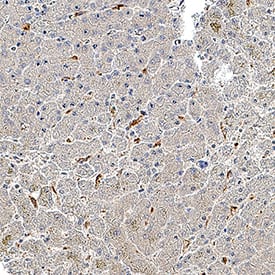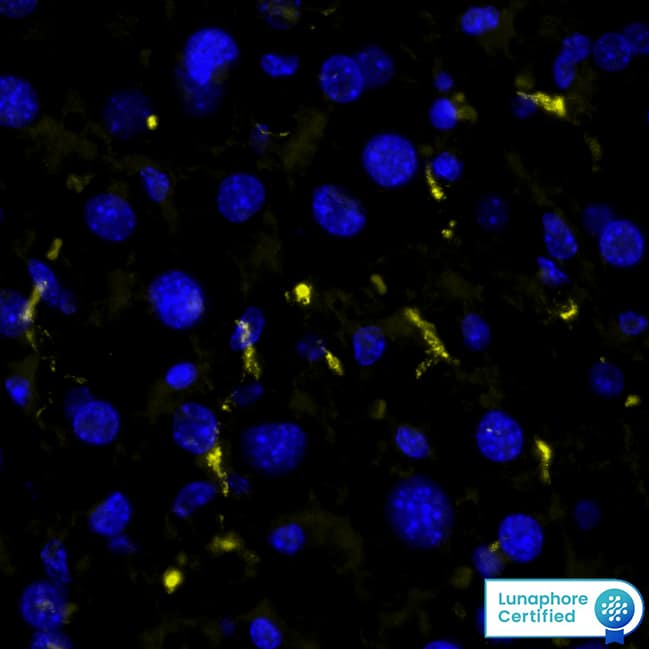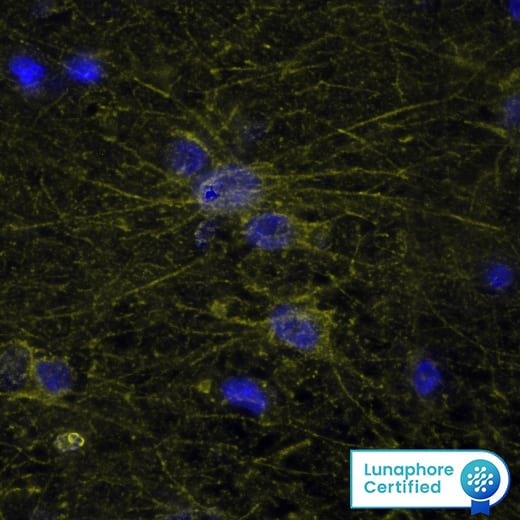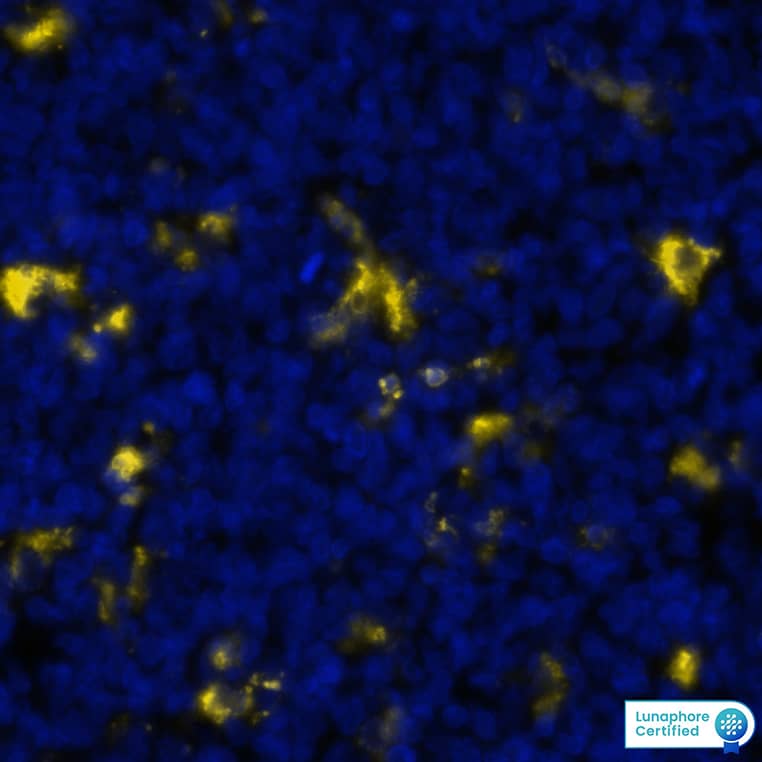Macrophage - Common Markers
The common markers used for distinguishing macrophages from other immune cell types are listed below or view additional markers that can be used to identify different macrophage activation states.

Recommended Products
Overview
Macrophages are specialized innate immune cells capable of phagocytosis and antigen presentation. They reside in all tissues of the body and are involved in immune surveillance, initiation of immune responses, and maintenance of tissue integrity. In addition, they may have specialized functions depending on their tissue of residence. Macrophages located in different tissues exhibit phenotypic heterogeneity in terms of both the cell surface receptors and transcription factors that they express. In addition, they are remarkably versatile and can rapidly alter their phenotypes and functions in response to environmental signals. Common cell surface markers used to identify human and mouse macrophages include CD11b/Integrin alpha M, CD14, CD68, Fc gamma RIII/CD16, Fc gamma RI/CD64, and CCR5, along with F4/80 in mouse. Additional markers are used to identify specific tissue-resident macrophages and different macrophage activation states.
| Table 1. Common Macrophage Markers - Antibodies by Molecule | |||||
| B7-1/CD80 | B7-2/CD86 | CCR5 | CD11b/Integrin alpha M | CD11c | CD14 |
| CD15/Lewis X | CD68/SR-D1 | CD163 | F4/80 | Fc gamma RI/CD64 | Fc gamma RII/CD32 |
| Fc gamma RIII/CD16 | Galectin-3 | GITR Ligand | HLA-DR | Integrin alpha L/CD11a | LAMP-2/CD107b |
| LILRB4/CD85k/ILT3 | M-CSF R/CD115 | MHC class II | Siglec-3/CD33 | TLR2 | TLR4 |
| Table 2. Cytokines for Monocyte/Macrophage Culture or Differentiation - Proteins by Molecule | |||||
| GM-CSF* | IFN-gamma* | IL-1 beta* | IL-4* | IL-10* | IL-13 |
| M-CSF* | TNF-alpha* | ||||
| * GMP-grade proteins are available for these molecules. | |||||
| Table 3. Select ELISAs for Detecting Molecules Secreted by Macrophages - Products by Molecule | |||||
| CCL1/I-309 | CCL2/MCP-1 | CCL3/MIP-1 alpha | CCL4/MIP-1 beta | CCL5/RANTES | CCL8/MCP-2 |
| CCL11/Eotaxin | CCL15/MIP-1 delta | CCL16/HCC-4 | CCL17/TARC | CCL18/PARC | CCL19/MIP-3 beta |
| CCL20/MIP-3 alpha | CCL22/MDC | CCL23/MPIF-1 | CCL24/Eotaxin-2 | CCL26/Eotaxin-3 | CX3CL1/Fractalkine |
| CXCL1/KC | CXCL2/MIP-2 | CXCL3/GRO gamma | CXCL5/ENA-78 | CXCL9/MIG | CXCL10/IP-10 |
| CXCL11/I-TAC | CXCL13/BLC/BCA-1 | CXCL16 | G-CSF | GM-CSF | IFN-gamma |
| IL-1 beta | IL-6 | IL-8/CXCL | IL-10 | IL-12 p70 | IL-17 |
| IL-18 | IL-23 | TGF-beta 1 | TNF-alpha | VEGF | |















































